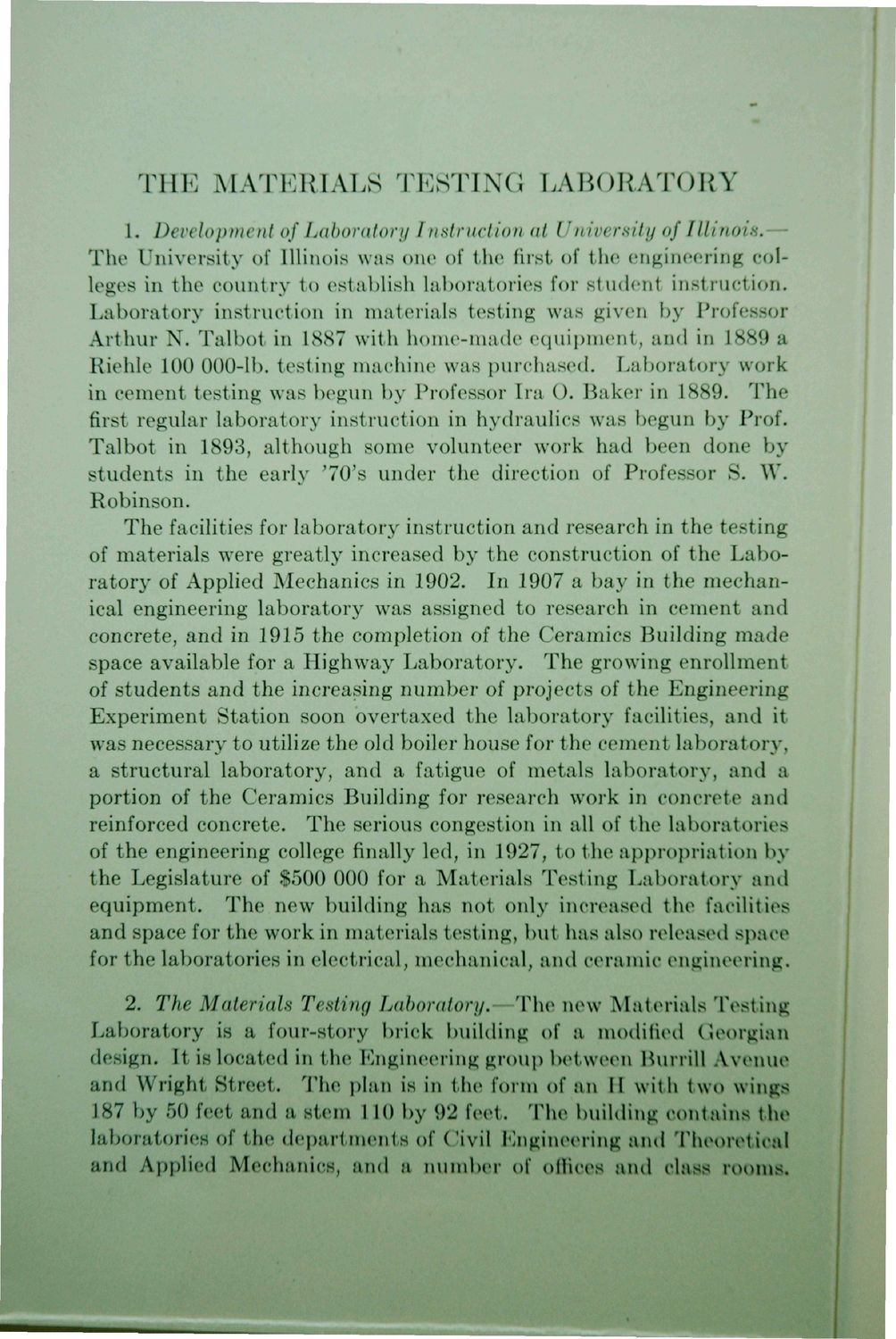| |
| |
Caption: Dedication - Materials Testing Lab Dedication
This is a reduced-resolution page image for fast online browsing.

EXTRACTED TEXT FROM PAGE:
THE MATERIALS TESTING LABORATORY 1. Development of Laboratory Instruction at University of Illinois.— The University of Illinois was one of the first of the engineering colleges in the country to establish laboratories for student instruction. Laboratory instruction in materials testing was given by Professor Arthur N. Talbot in 1887 with home-made equipment, and in 1889 a Riehle 100 000-lb. testing machine was purchased. Laboratory work in cement testing was begun by Professor Ira 0. Baker in 1889. The first regular laboratory instruction in hydraulics was begun by Prof. Talbot in 1893, although some volunteer work had been done by students in the early ?70's under the direction of Professor S. W. Robinson. The facilities for laboratory instruction and research in the testing of materials were greatly increased by the construction of the Laboratory of Applied Mechanics in 1902. In 1907 a bay in the mechanical engineering laboratory was assigned to research in cement and concrete, and in 1915 the completion of the Ceramics Building made space available for a Highway Laboratory. The growing enrollment of students and the increasing number of projects of the Engineering Experiment Station soon overtaxed the laboratory facilities, and it was necessary to utilize the old boiler house for the cement laboratory, a structural laboratory, and a fatigue of metals laboratory, and a portion of the Ceramics Building for research work in concrete and reinforced concrete. The serious congestion in all of the laboratories of the engineering college finally led, in 1927, to the appropriation by the Legislature of $500 000 for a Materials Testing Laboratory and equipment. The new building has not only increased the facilities and space for the work in materials testing, but has also released space for the laboratories in electrical, mechanical, and ceramic engineering. 2. The Materials Testing Laboratory.—The new Materials Testing Laboratory is a four-story brick building of a modified Georgian design. It is located in the Engineering group between Burrill Avenue and Wright Street. The plan is in the form of an H with two wings 187 by 50 feet and a stem 110 by 92 feet. The building contains the laboratories of the departments of Civil Engineering and Theoretical and Applied Mechanics, and a number of offices and class rooms.
| |